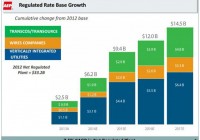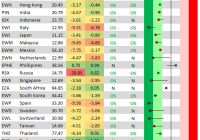SEC Enhancing Regulatory Monitoring Of Asset Managers
by Ron D’Vari The asset management industry is evolving rapidly and so are the regulatory environment and tools that govern and support it. The larger managers had thought they had received a reprieve by the Financial Stability Oversight Council’s decision not to designate individual asset management firms as Systemically Important Financial Institutions (SIFIs), but instead focusing its attention on potential risks within asset managers’ activities and products they offer. As a result, the giant asset managers are spared from Federal Reserve. In an apparent response to that, the SEC is increasing focus on the asset management industry. In a speech on December 11, SEC Chair Mary Jo White referenced new initiatives to address portfolio composition risks and operational risks of asset managers. Portfolio composition risks include liquidity and leverage risks of a fund’s holdings and operational risks encompassing inadequate or failed internal processes and systems. The heightened SEC monitoring will include expanded data reporting and enhanced controls on risks related to portfolio composition and liquidity management. A more comprehensive approach will be taken to monitor the risks associated with the increasingly complex nature of fund holdings and the use of derivatives. Additionally, the SEC will be looking into “transition planning” and stress testing, both market and operationally. Asset managers will be expected to safeguard against the impact on investors of a market stress event or when an investment adviser is no longer able to serve its clients. There has been a significant increase in the use of derivatives by funds in general. More and more, fund managers are using derivatives to adjust or obtain exposure to a market sector more efficiently. However, the risks of implied leveraged exposures and potential illiquidity in derivative instruments can be opaque or underestimated. As a result, management of liquidity and redemption and the use of derivatives in widely distributed mutual funds, ETFs and separately managed accounts are becoming key areas of focus by the SEC. The SEC staff will be watching for significant risks of inadequate controls in those areas, to the funds and their investors, as well as potential impact on the overall financial system. Asset managers will be required to manage risks of not being able to meet redemptions under stressful market scenarios. This means that not only the giant managers have to meet enhanced composition and liquidity regulatory requirements; the entire asset management industry needs to. Now that you’ve read this, are you Bullish or Bearish on ? Bullish Bearish Sentiment on ( ) Thanks for sharing your thoughts. Why are you ? Submit & View Results Skip to results » Share this article with a colleague

